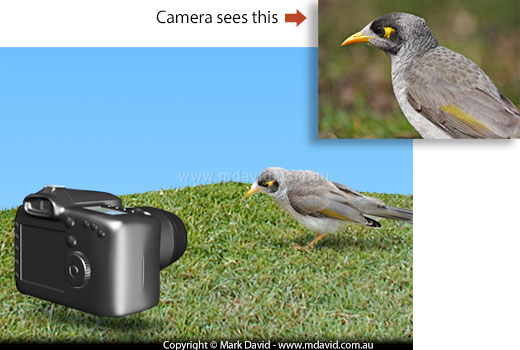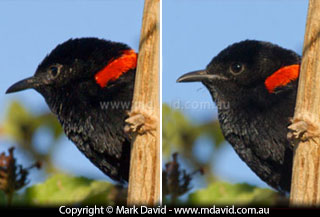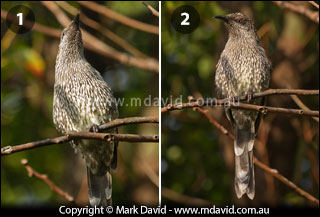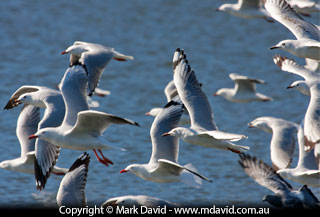
They’re all around us, but getting a good shot of one can be exasperating. Here are some tricks to help your bird photography
PART 1 | PART 2
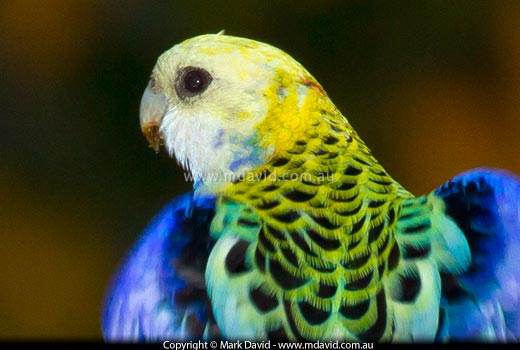
Pale-headed Rosella
Take a walk outside and most of us would be lucky to see herds of bison, mobs of roos or any from a range of megafauna. But birds are all around us. They spoil us with their variety, colour and sheer numbers. So it’s not surprising that a lot of nature photographers develop a fascination for birds. But photographing them has its challenges too.
Lenses
Usually, the longer the lens the better. Birds have a frustrating habit of being small and distant so if you want to fill your frame with a small bird then that suggests telephoto. But a long lens is not your only option. You could also:
- sneak up on the bird until you are as close as possible
- spend some time in a bird hide near a place where birds hang out (more about hides later)
- go to a place where birds are used to people, like public parks
- and I guess you can also look for bigger birds!
Focus on the eyes
Normally, you’ll want to get the bird’s eyes in focus. That might mean you need to select a single focus point in your camera’s focus settings. Of course when I say this I’m assuming we’re talking about sitting or standing birds. If the bird is flying past then forget about the eyes and just try to focus on the bird! (More about birds in flight later in this article.)
Cropping
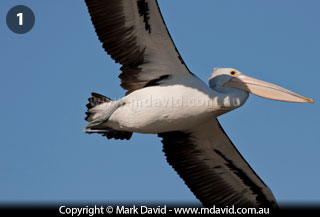
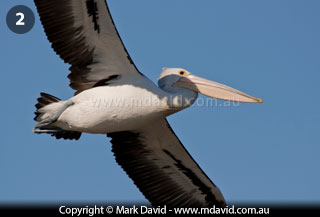
In picture 1, the pelican looks like it was hemmed in by the edge of the frame. In picture 2, the image has been cropped differently.
The way you crop can make a big difference to your photos. By cropping, I mean the use of your image-editing software to cut off the edges from the photo. If you look at the two photos of the pelican at you’ll see that the first image makes it look like the bird is about to crash into the right edge of the frame. So It’s often a good idea to allow your cropped photos to have a bit of space in front of the bird so the creature looks like it has some environment to walk/fly into, as I’ve done in the second version.
With other types of photography you will often have the time to think about these issues while framing your shot through the viewfinder, but when taking shots of birds — especially flying birds — we don’t always have that luxury!
Camera settings
Most of the time, birds — especially the smallish ones — get about in quick, jerky movements. A lot of birds also jerk their heads backwards and forwards really fast when they walk, resulting in lots of blurred shots. To freeze that action down to a sharp image you’re going to be forced into using a fairly quick exposure. I tend not to go any slower than 500th a second shutter speed when photographing birds. 1000th second is probably better. The exception to this rule is if you deliberately want some motion blur, like the flapping of a bird’s wings. And then 1,000th second is probably too fast. For this reason, setting your camera to shutter speed priority and choosing 1000th second is a good start. If the light is not very strong, like very early in the morning, then slow the shutter speed speed down a bit.
Get down to their level
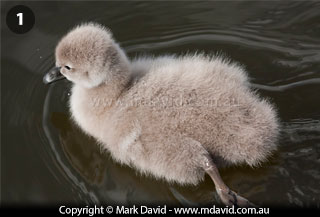
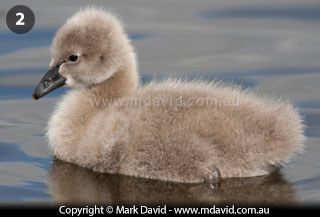
1: Because we’re so familiar with looking down on birds, a photo of a bird from that same angle can look kind of boring, yet most beginning photographers start firing off shots while standing up and end up with a camera full of pictures of the tops of birds’ heads. 2: By comparison, getting down to the bird’s eye level resulted in a much more engaging image. The bird in these shots is a Black Swan cygnet. Cute eh?
When we see birds they tend to normally be either way above us or on the ground below us. So most people are already bored with the sight of the tops or bottoms of birds. However, if you take a photo of a bird at its eye level then you have some big advantages. First, the bird will look more interesting because that’s not an angle we’re used to seeing birds. Second, you’re more likely to see the bird’s face. And third, you will find that the background of the photo, instead of being the ground directly underneath it, might switch to being something several feet away or more, which will put the background way out of focus. That will draw even more attention to the bird.
To get low enough might mean you have to lie on the ground.
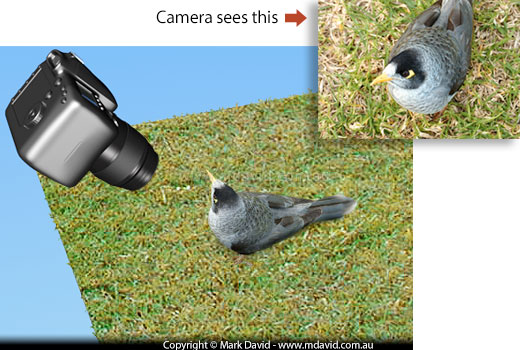
Here we go talking about camera angle again. But now I’m thinking about the background. See how the ground is going to be in focus and risk distracting from the subject?
